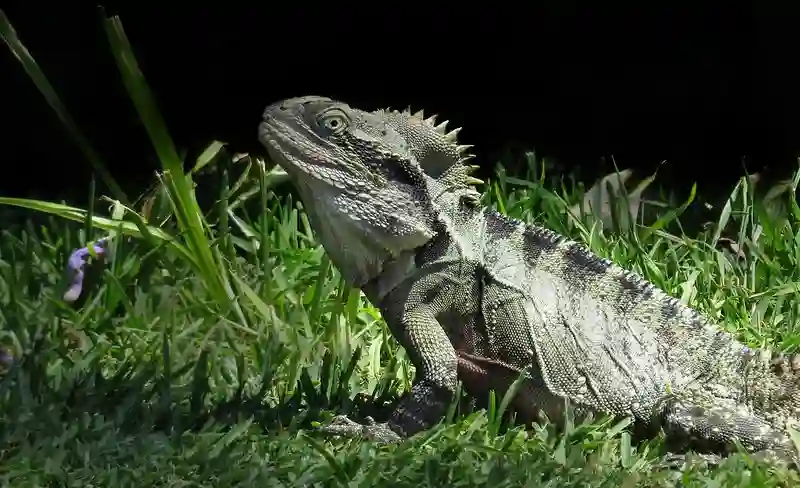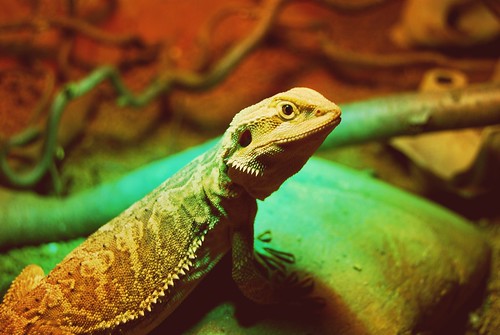Are you a reptile enthusiast looking to learn more about the elusive blue bearded dragon? Look no further! This comprehensive guide will cover everything you need to know about these fascinating creatures, from their unique physical characteristics to the best practices for keeping them healthy and happy in captivity.
What are Blue Bearded Dragons?
Blue bearded dragons, or Pogona vitticeps, are a rare color variation of the popular bearded dragon species native to Australia. Although they are referred to as “blue,” they actually have a unique silvery-blue hue that makes them stand out from their more common counterparts.
Physical characteristics
The color of blue bearded dragons can vary greatly, from a light silvery-blue to a darker gray-blue. This coloration is the result of selective breeding and genetic mutations, as well as environmental factors such as temperature and diet.
Size and weight
Blue bearded dragons, like other bearded dragons, can grow up to 24 inches in length, with males being slightly larger than females. They typically weigh between 350 and 600 grams, with some reaching up to 800 grams.
Habitat and environment
In the wild, blue bearded dragons inhabit the arid woodlands and deserts of central Australia. They can often be found basking on rocks and branches or hiding in burrows and crevices to escape the heat.
Creating a suitable environment at home
When keeping a blue bearded dragon as a pet, it’s essential to replicate their natural environment as closely as possible. This includes maintaining a temperature gradient within their enclosure, with a basking area of 95-110°F and a cooler area around 80-85°F. Additionally, provide 12-14 hours of UVB light each day to ensure proper metabolism and bone health.
Substrate and furnishings
Choose a substrate that resembles their natural habitat, such as reptile carpet, newspaper, or non-adhesive shelf liner. Avoid using sand, as it can cause impaction if ingested. Provide plenty of hiding spots and climbing opportunities using rocks, branches, and artificial plants. A water dish should also be provided for drinking and soaking.
Diet and nutrition
Blue bearded dragons are omnivorous, requiring a balanced diet of both plant and animal matter. Juveniles should be fed daily, while adults can be fed every other day. Monitor their weight and adjust the feeding frequency accordingly to prevent overfeeding and obesity.
Types of food
Insects
Insects such as crickets, dubia roaches, and mealworms should make up the majority of a blue bearded dragon’s diet. Ensure that insects are gut-loaded and dusted with calcium and vitamin D3 supplements to provide essential nutrients.
Vegetables and fruits
Leafy greens, vegetables, and fruits can be offered to your blue bearded dragon as a supplement to their insect diet. Aim for a ratio of 80% vegetables and 20% fruits. Some suitable options include collard greens, mustard greens, squash, and berries.
Health and wellness
Common health issues
Like all reptiles, blue bearded dragons are susceptible to various health issues. Common problems include metabolic bone disease, impaction, respiratory infections, and parasites. Regular vet checkups can help detect and treat these issues early.
Preventive measures
Maintaining a clean and properly set up enclosure, providing a balanced diet, and ensuring adequate UVB lighting can help prevent many health issues. Additionally, practice good hygiene by washing your hands before and after handling your blue bearded dragon to minimize the risk of transmitting diseases.
Breeding and reproduction
Mating process
Blue bearded dragons reach sexual maturity between 8-12 months of age. During the breeding season, males will display head bobbing and darken their beards to attract females. Successful mating often results in the female laying a clutch of eggs within 4-6 weeks.
Egg incubation and care
Once the female lays her eggs, they should be carefully transferred to an incubator set at 82-86°F and 70% humidity. The eggs will typically hatch within 55-75 days. Hatchlings should be housed separately from adults and fed a diet high in protein to support rapid growth.
Conclusion
Blue bearded dragons are fascinating creatures that require specialized care and attention. By providing a suitable environment, proper diet, and regular health checks, you can ensure a happy and healthy life for your unique pet. Whether you’re an experienced reptile keeper or a beginner, the blue bearded dragon is sure to captivate your heart.
FAQs
Do blue bearded dragons change color? Yes, like other bearded dragons, blue bearded dragons can change color due to mood, temperature, and stress.
How long do blue-bearded dragons live? With proper care, blue bearded dragons can live up to 10-15 years in captivity.
Are blue bearded dragons more expensive than other bearded dragons? Due to their rarity, blue bearded dragons can be more expensive than other color variations, but prices may vary depending on factors like age, size, and breeder reputation.


